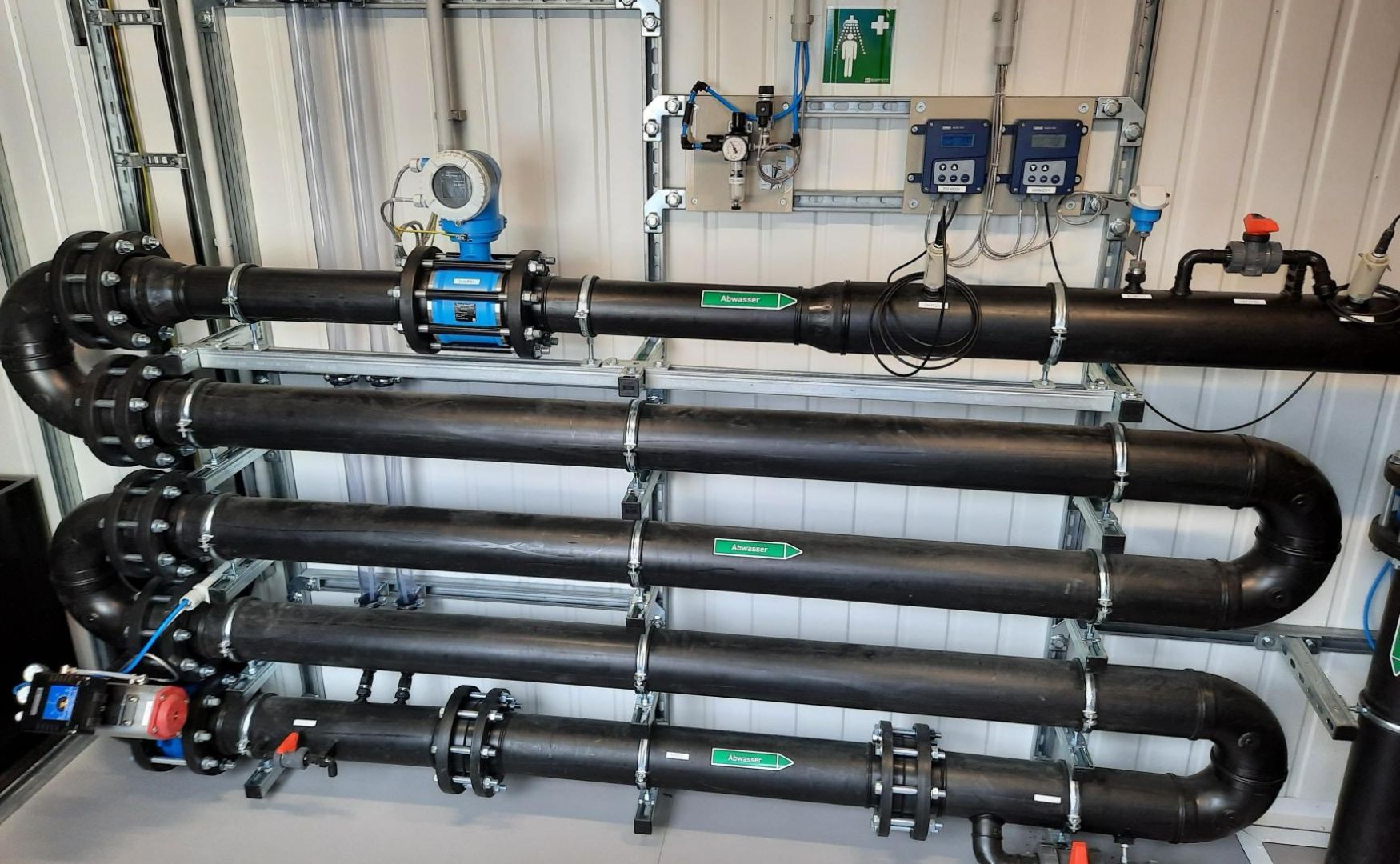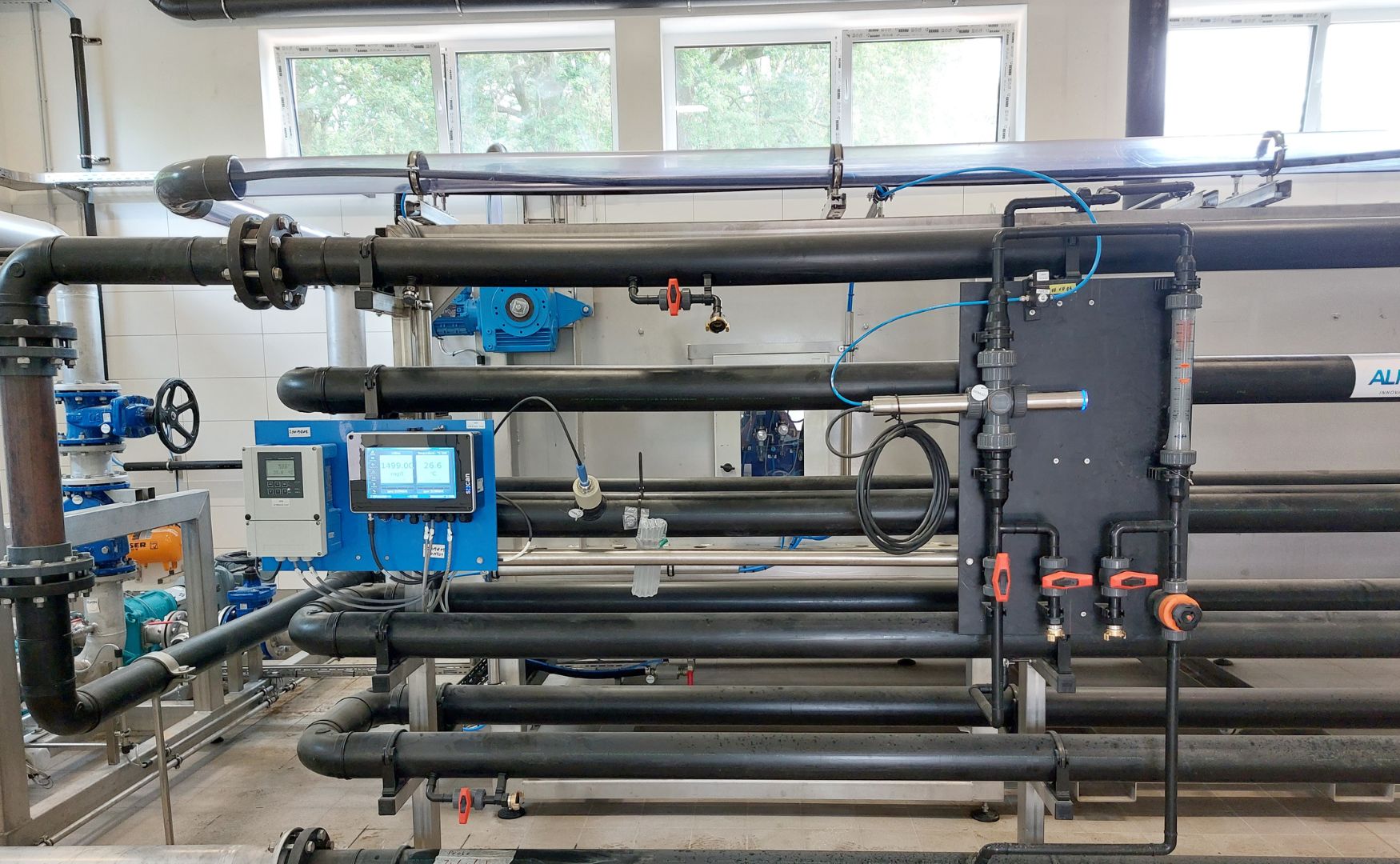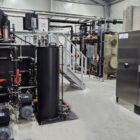Control is a central concept in process engineering that enables the continuous monitoring and adjustment of processes. In industrial water and wastewater treatment, control describes the targeted control of physical, chemical and biological parameters within a plant in order to ensure stable, efficient and safe operation. The aim of control is to maintain target values for certain process parameters or to correct process disturbances through dynamic adjustment.
Table of contents
Fundamentals of control engineering
Definition and structure of a control loop
A control loop consists of several functional elements that work together to achieve and maintain a defined setpoint value for a process parameter (e.g. pH value, temperature, pressure or flow rate). The main components of a control loop are
- Controller: The central element that calculates the necessary adjustments based on the measured values.
- Measuring element: records the actual value of the process (e.g. pH probe, redox electrode or flow sensor).
- Actuator: Carries out the adjustments (e.g. dosing pump, valve or motor).
- Process: The physical or chemical system that is controlled.
- Feedback signal: Returns the current actual value to the controller.
The basic function of a control circuit is based on the comparison of setpoint and actual value. A deviation (control difference) is detected and compensated for by the actuator.
Difference between control and regulation
In contrast to the control system, which has no feedback and is based on fixed specifications, closed-loop control is a dynamic process that reacts to feedback from the system. This makes closed-loop control more robust against faults and changes in the process.
Application of the regulation in industrial water and wastewater treatment
Control is essential in water and wastewater technology, as many parameters must be precisely maintained to ensure effective treatment. Important applications are described below:
1. regulation of the pH value
The pH value is one of the key parameters in water and wastewater treatment. Precise pH control is crucial for:
- Precipitation and flocculationThe formation of flocs (e.g. from aluminum or iron compounds) is strongly pH-dependent. A pH value outside the optimum range reduces the efficiency of precipitation.
- Corrosion protection: A pH value that is too low or too high can lead to corrosion in pipes and systems.
- Neutralization: In many processes, e.g. in dairies or the chemical industry, acidic or alkaline wastewater must be brought to a neutral range in neutralization plants.
Control is typically achieved via a pH sensor that records the actual value and a dosing system that adds acid or alkali to achieve the target value.
2. regulation of the redox potential
The redox potential is an indicator of the oxidizing or reducing power of a solution. The control of this parameter is often used for:
- Disinfection processes: Control of the dosing of oxidizing agents such as chlorine or ozone.
- Heavy metal reduction: Control of the reducing agent supply (e.g. sodium bisulphite for the conversion of chromium(VI) to chromium(III)).
A dynamic control loop enables precise adjustment in order to optimize reaction conditions.

Photo: pH-controlled dosing of acid and alkali in the reaction loop of our ALMA Neutra neutralization system
3. flow control
Flow control plays an essential role in process water treatment and in the operation of systems, particularly in the case of:
- Membrane systemsThe regulation of the flow rate is crucial in order to avoid membrane damage due to excessive pressure and to minimize fouling.
- Dosing of chemicals: Chemicals such as antiscalants or corrosion inhibitors must be added in proportion to the flow rate.
Flow meters such as ultrasonic, electromagnetic or differential pressure measuring systems provide the actual value, while control valves or pumps regulate the flow.
4. temperature control
Temperature control is particularly important in processes such as biological wastewater treatment (e.g. in anaerobic reactors), as microorganisms are sensitive to temperature fluctuations. Temperature control is achieved via:
- Heat exchanger for cooling or heating.
- Thermal sensors for monitoring the actual value.
5. regulation of the dosing of precipitants and flocculants by online COD measurement
Controlling the dosing of precipitants and flocculants using online COD (chemical oxygen demand) measurement is an advanced method of optimizing the efficiency of precipitation and flocculation processes in industrial wastewater treatment. The COD is a measure of the total amount of organically oxidizable substances in the water and provides a direct indication of the pollution load.
Functionality of the control:
- A COD online analyzer continuously measures the content of oxidizable organic substances in the wastewater flow. The measurement takes place in real time and provides precise data on the current contamination of the water.
- Based on the measured COD values, the dosing quantity of precipitants (e.g. iron or aluminum salts) and flocculants (e.g. polymers) is automatically adjusted.
- The control circuit uses the measured COD value as the actual value, compares it with the specified target value and controls the addition of chemicals via the dosing system.
Advantages of this regulation:
- Efficient use of chemicals: The dosage is adapted precisely to the current dirt load, thus avoiding overdosing and unnecessary chemical consumption.
- Stable effluent quality: The precise adjustment of the chemicals ensures a consistently high cleaning performance, which is particularly important when wastewater loads fluctuate greatly.
- Cost reduction: The addition of chemicals as required reduces operating costs and minimizes sludge production, as no surplus precipitants remain unused.
Technical implementation of the regulation
Control algorithms
Modern control loops use various algorithms to calculate the actuator adjustments. The most common control strategies are
- P-controller (proportional controller): Adjusts the actuator in proportion to the deviation. Simple, but with limited precision.
- PI controller (proportional-integral controller): Combines proportional adjustments with compensation for systematic deviations (offset).
- PID controller (proportional-integral-differential controller): Supplements control by predicting future changes based on the rate of change of the actual value. Ideal for dynamic processes such as water treatment.
Integration into process control systems
In modern systems, control loops are integrated into SCADA systems (Supervisory Control and Data Acquisition) or DCS systems (Distributed Control Systems). These systems allow:
- Real-time monitoring of all control parameters.
- Automatic alarms when limit values are exceeded.
- Data recording to analyze and optimize the efficiency of the control system.

Photo: COD-controlled dosing of precipitants and flocculants in the inlet of our ALMA NeoDAF flotation plant
Challenges and opportunities for optimization
Malfunctions in the control loop
Frequent faults in the control system are caused by
- Sensor errors: Inaccuracies or failures in pH probes, redox electrodes or flow sensors.
- Process inertia: Delays between the actuator action and the reaction in the process.
- Non-linearity: Many water-chemical processes exhibit non-linear behavior that overwhelms simple control algorithms.
Optimization through model-based control
Model-based control strategies such as adaptive control or predictive control (MPC) use mathematical models of the process to enable more precise and faster adjustments. These approaches are particularly useful in complex applications such as membrane filtration or biological reactors.
Conclusion
Control is an indispensable tool in industrial water and wastewater treatment. It enables the precise control of critical process parameters such as pH value, redox potential, flow rate and temperature, thus ensuring stable and efficient operation of the systems. A sound understanding of control technology and its application is essential for engineers and operators in order to avoid process disruptions, increase efficiency and ensure compliance with legal requirements.
For further information on our products, please feel free to contact us at any time!








